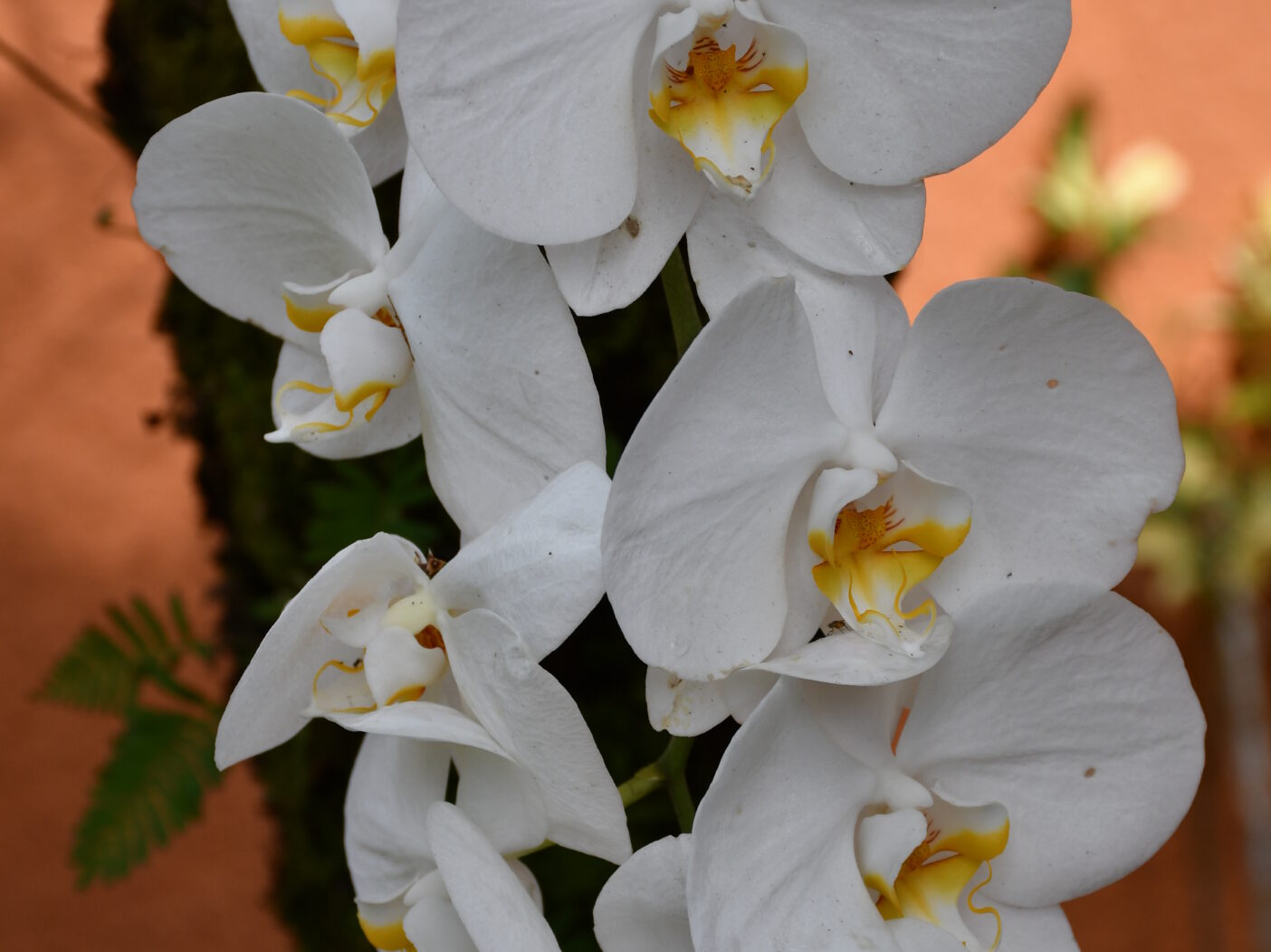
Once so rare that explorers lost their lives seeking them, orchids are now so ubiquitous that you can toss them in your grocery cart, alongside your milk and eggs.
But how do you pick the perfect plant and care for it once you get it home? Read on for a quick primer on how to select them, care for them, and place them in the right spot in your house or yard.
Orchid selection
Buying at a food or home improvement chain store is different from buying from a local nursery. The large retailers often source their orchids overseas from the Philippines or Indonesia, which means they spend a long time in transport in tightly packed crates.

To find the best of these travel-weary plants, look for:
- Petals that feel firm and somewhat rigid, not wilting, limp, or thin.
- Leaves that are slightly yellow-green. Some fully yellow leaves at the bottom are OK, if those at the top are green. Orchids do replace leaves over their lifetime. But if all leaves are yellow, the plant is in distress, and you should leave it on the store shelf! Check also for black spots and white bumps, signs of a potential pest infestation.
- Roots that are white or green in color and firm to the touch (and, yes, we advocate sticking your finger in the potting medium and poking around). Roots that are black, brown, or mushy are probably rotted.
- Potting media that aren’t past their prime. Common media include pine bark, wood chips, sphagnum moss, and other loose material. If your finger comes out of the pot “dusty,” it’s a sign that the media have started to disintegrate.
- Orchids that smell fresh. If you catch a foul whiff, pick a different plant!
Orchid care
Sorry, orchid newbies, there is no standard rule on when and how much to water these plants.
Some general tips include:
- Avoid over-watering. When the inside of the pot is dry, it’s time to hydrate.
- Water in the morning, before plants are in full sun.
- Saturate the roots until they turn a dark green in color.


Most orchids available for retail are epiphytes. These are non-parasitic plants that grow on other plants, often without the presence of soil. Chances are the one you purchased is in a pot and growing in a medium such as sphagnum moss. You don’t need to repot your plant unless the potting media have rotted or the roots appear to be trying to escape the container. A few roots sticking out here and there is just fine — orchid roots like to wander. More than that, and you’ll want to consider up-sizing your pot.
If you do repot your orchid, pull the plant out, wash the old media off the roots, and prune any dead roots. Apply cinnamon powder to any places you pruned; this spice has anti-bacterial and anti-fungal properties. Orchids don’t like oversized pots. To determine the correct container, place the roots against one edge of the pot and on the opposite side, leave a thumbs-width space between the roots and edge of the pot. Center the plant and pack the roots with potting media. NOTE: Repot after the orchid has finished blooming. Repotting during blooming will place extra stress on the plant and could kill it.
Blooms & sunlight
The No. 1 issue home growers face is getting their orchids to re-bloom. The primary issue with a non-blooming orchid has to do with sunlight. Orchids are a bit like Goldilocks; they don’t like too much or too little. The magic middle varies for each plant, so research your particular species to find out how much sun it tolerates.
Once the orchid has finished blooming, decide whether to remove the flower spike. Leaving it in place will prompt your orchid to re-bloom with smaller and fewer flowers. Removing it will result in blooms the same size of the original, if not larger. This option results in what many consider to be more spectacular blooms.
 Mounting orchids
Mounting orchids
Strapping an orchid to a tree is my preferred way of caring for them because it replicates how they grow naturally in the wild. They cling to branches with their roots and absorb nutrients from rainwater, debris and humidity. Putting an orchid in the boot of a palm or strapping it to a tree and forgetting about it are the best — and easiest — ways to care for them. At the Garden, we use zip ties to attach orchids to trees. Make sure to press the base of the plant (the place where the stem meets the roots) against the tree as tightly as possible without hurting the plant. Attach orchids at a slight angle so that rainwater can easily run off their leaves. Eventually, the roots will wrap around the tree, and you will be able to remove the zip tie. Click here to see a video of my colleague mounting an orchid to her tree.
 About the Author
About the Author
Kyle Possai is an Educator II at Naples Botanical Garden. When not at the Garden he enjoys making music through guitar and piano.

